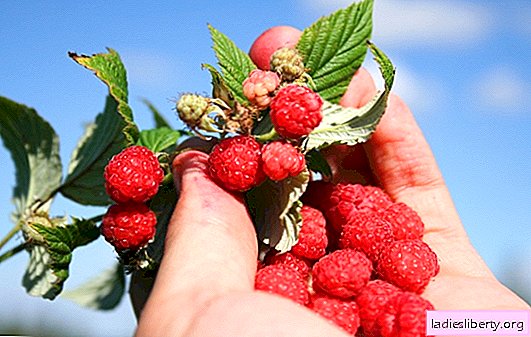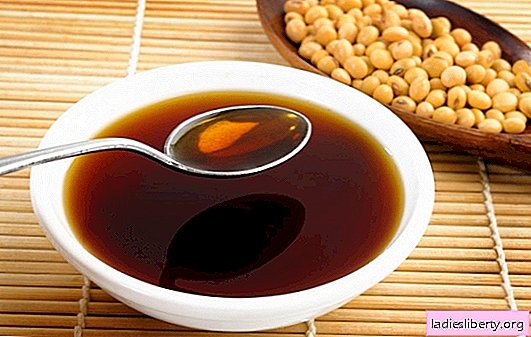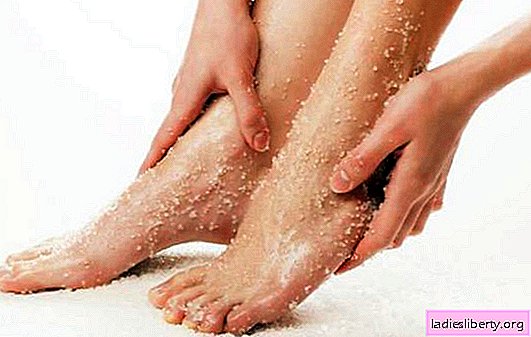
Raspberries are one of the most common plants in garden plots. It is not only tasty, rich in vitamins and nutrients, it is also the best cold remedy. But in order to collect and prepare raspberries, you need to take care of her. This culture is quite unpretentious, but dozens of pests and diseases can damage it. In order to keep the berry bushes healthy and fruitful, you need to monitor them and take timely measures to prevent and treat raspberry diseases and get rid of pests.
What are the diseases of raspberry?
Raspberry is sick with fungal and viral diseases: anthracnose, gray rot, powdery mildew, different spots, rust, mosaic, chlorosis, curly, witch's broom, didimella, root and stem cancer.

• Anthracnose raspberries - The most common raspberry disease. It affects almost all parts of the plant. A sign of it is roundish grayish spots with a brown border with a diameter of up to 3 mm on the leaves, gray spots and ulcers with the same border are also formed on the stems. With the development of the disease, the spots turn into cracked tissue and the shoots die off. Most of all, wet spring or summer is suitable for the development of anthracnose. This disease is treated with 1 percent Bordeaux fluid, 3 percent nitrafen or 5 percent urea. Spray plants in early spring before flowering.
• Gray rot - manifests itself first in the form of medium-sized gray spots. Raspberries rot and spoil. The stalk is damaged and the ovary dries. Leaves are also covered with gray rotting spots. Rot spores invade and germinate in raspberry tissue, and in a few days they can ruin the crop. The most common disease in damp summers and in thickened plantings. They fight rot by treating the bush and soil with Topaz in the early spring, when the berries are tied - the soil around the bush is sprinkled with ash or charcoal. Sprinkling during this period is canceled. Excessive dampness can interfere with the treatment of raspberry gray rot disease.
• Powdery Mildew - Another fungal disease that can affect raspberry bushes and cause their death. The leaves are affected, they are covered with a whitish coating on the back. Then the leaves coarse, twist, and the berries are affected. Raspberry berries have a mushroom smell. To detect and quickly treat the disease, you need to do a regular inspection of plants. Burn all old branches and leaves on time. Well-proven fungicides: Fundazole, Gamair, Topaz, Fundazole, Quadris, Bayleton, Topsin, Fundazim. From folk remedies - soap with soda, ash, mullein.
• Spotting. It acts on leaves and stems, appearing in the form of white or brown spots with a brown border. With the development of the disease, the tissues die and fall out. Light or brown fuzzy spots appear on the stems, which then crack.
• Curly - the leaves shrink, become stiffer, acquire a bronze color, fruit brushes are deformed, the berries become acidic, dry. Raspberry bushes die within 4 years. For prevention and treatment, get rid of affected shoots and leaves, cutting and burning them.
• When mosaic tuberosity and colorful coloring of leaves appears alternating dark green and light green patches. The roots degenerate, the bushes bear little fruit, the fruits become tasteless. To get rid of the mosaic, they regularly inspect the plantings and destroy infected shoots, leaves. Bushes are treated with Agravertin or Fitoverm drugs, which act on pests that carry this infection. Timely weed removal is one of the preventative measures to prevent mosaics.
• Infectious and physiological chlorosis - leads to severe yellowing of the leaves, the shoots are thinned, the berries dry out. Physiological - develops on acidic soils or with a lack of iron and potassium. To avoid it, you should reduce the acidity of the soil. To do this, it is lime, and raspberry bushes are fed with ash or potassium nitrate, iron preparations. Infectious chlorosis is difficult to cure, but can be prevented. You can try to treat Bordeaux with a 3 percent liquid before flowering and after harvesting with a 0.5 percent solution. In addition, treatment with Topaz or 0.1 percent Fundazole is recommended.

• Witch's broom (dwarfism) - thin shoots with a small number of leaves are formed. Their fruiting ceases, shoots become smaller, plant growth is inhibited, productivity decreases. For prevention and treatment, regular inspection and culling of infected plants, treatment with karbofos before flowering and after harvest (75 g per 10 liters of water) are used.
• didimella - Another type of raspberry disease. It is characterized by the formation of spots of brown-purple color in the place of attachment of the sheet. With the development of the disease, they increase and darken, turning into tubercles. To combat the disease you need to spray in early spring with Bordeaux liquid (300 g per bucket of water). And before flowering and after picking berries, a 1 percent solution is used.
• Root or stem cancer - occurs on damaged roots or stems. Solid brown growths appear on them. The disease affects reproduction, resistance to drought and frost is reduced. If the disease is started and left untreated, the raspberry can thinn up to 60 percent. The fight against cancer is the regular inspection of plants, timely cutting of shoots affected by the disease and burning them. Damaged bushes are removed and new plantings are laid. The roots are treated with a solution of copper sulfate.

The treatment of raspberry diseases is the most important measure to get a good harvest.
What are the main pests of raspberries? How to deal with them?
In addition to diseases, raspberry pests can destroy plants. The most dangerous: raspberry weevil, nematodes, raspberry beetle, raspberry bud moth, raspberry stem fly.

• Raspberry Weevil - a dark gray bug, feeds on flowers and leaves of the plant. It spreads over the plant by the end of July, and destroy the bush. For prevention, raspberries are sprayed with Confidor, Spark or other similar preparations before the leaves appear. After harvesting - karbofosom.
• Nematodes - very small worms, often invisible to the eye. They live inside the plant. They multiply quickly and damage the plant. At the same time, tissues grow, leaves and flowers are deformed. Such plants are usually depressed in growth, the leaves are shriveled and ugly, pimples can appear on them. These pests can cause ring spotting. The raspberry bush may stop bearing fruit. For prevention and treatment, infected plants should be destroyed, the soil treated with bleach, and weeds removed.
• raspberry beetle - a small black bug. It feeds on leaves, eating holes, flower buds, damaging the ovaries. Winters in the soil. Causes worminess of raspberries. Control measures - treatment with malathion (0.3 percent) before budding. In autumn and spring, the burning of all residues and damaged parts of plants.
• Raspberry kidney moth - eats kidneys and shoots. Winters at the base of plants. For the purposes of control and prevention, they carry out autumn pruning of prolific shoots, remove all debris, loosen the soil, and burn the remains in autumn and spring.
• Raspberry stem fly - causes blackening and rotting of the tops of shoots. They get rid of it, destroying garbage, burning residues, in the spring - spraying with karbofos.

Diseases and pests of raspberries can significantly spoil the planting and deprive the raspberry crop if left untreated and prevented.











